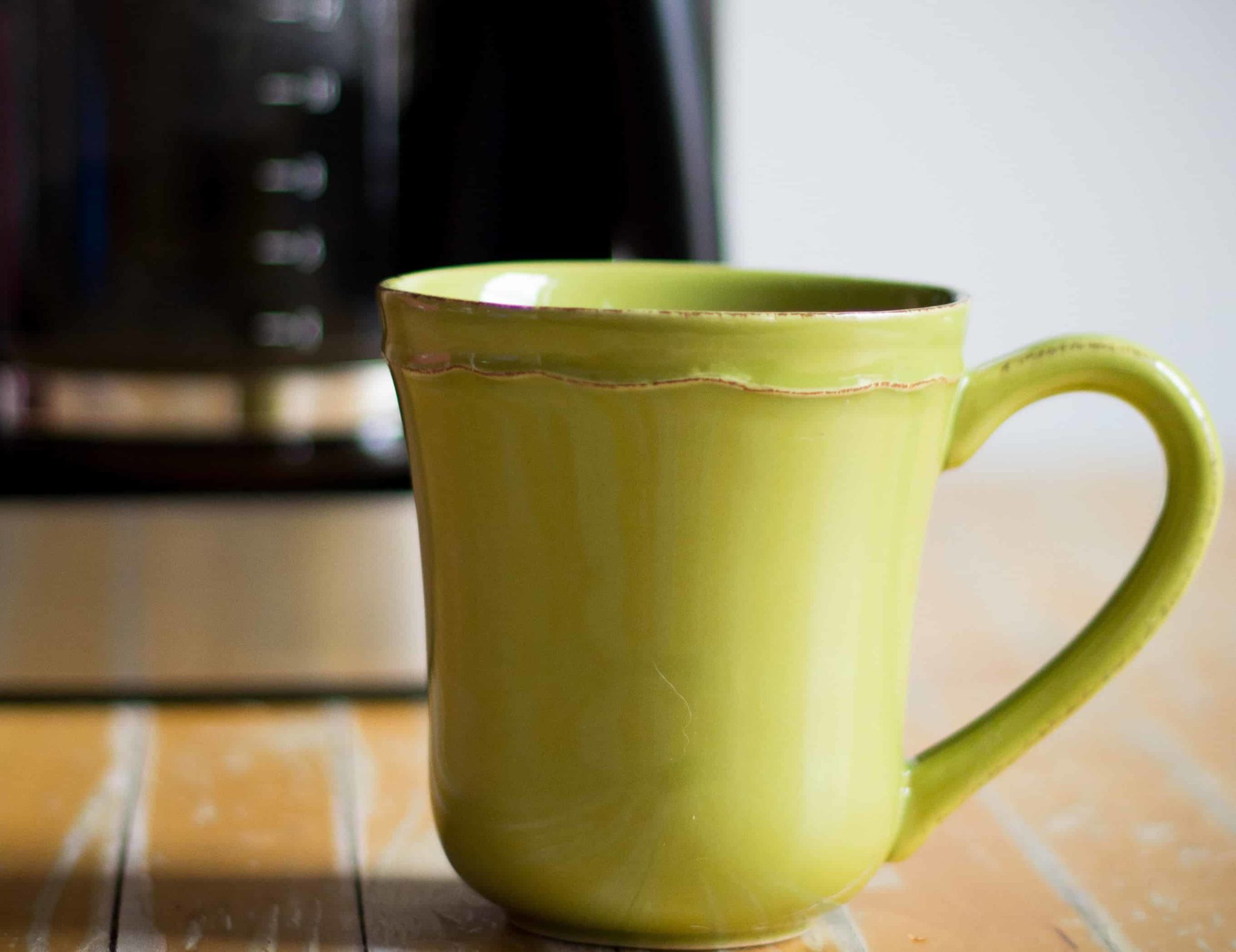
When Mr. Coffee came on the scene in 1972, it quickly replaced the percolator as America's coffee maker of choice, and it's easy to see why: drip coffee makers are easy to use, versatile, and they keep getting better.
When dialed in, these little coffee robots can make an excellent cup of joe, and most importantly, they're able to repeat the same recipe over and over much better than would be possible for a mere human.
QUICK TIP:
Just to keep us on our toes, a coffee maker's "cup" can range from 4 to 6 ounces, although the standard American cup measurement is 8oz. It's a good idea to use a measuring cup to check how many ounces your coffee maker's "cup" is giving you.
Or, even better: use a scale! Each milliliter of water weighs a gram, so you can use any gram scale to get precise water (and coffee) measurements.
GRIND SIZE
Medium
It should look like Kosher salt or a little bit finer, but the ideal grind setting differs slightly depending on the filter. For instance, cone-shaped filters work best with a slightly finer grind than flat-bottom filters. All auto-drips use some variation of a medium grind, though. Read about why we love burr grinders below!
RECIPES
A GOOD STARTING RECIPE:
Coffee: 15 grams (that's 0.5 oz or 2 TBSP)
Water: 235 grams (that's 8 fl oz or 1 cup)
Tip: use a gram scale for more precision!
FOR A POT OF COFFEE:
Classic, Bold, and Extra Bold Profiles
Coffee: 75 grams (that's about 10 tbsp or 2.5 oz)
Water: 1180 grams (that's 40 fl oz or 5 cups)
For these medium to dark roasted profiles, we like a little more coffee to water, which accentuates sweetness.
Fruity and Balanced Profiles
Coffee: 70 grams (that's about 9 tbsp or 2.25 oz)
Water: 1180 grams (that's 40 fl oz or 5 cups)
These profiles are lighter roasted and have more acidity, so we find that a less concentrated recipe really brings out the brightness and fruit.
Experiment to figure out the coffee to water ratio you prefer!
MORE TIPS FOR THE BEST TASTING ELECTRIC DRIP!
- Let the Water Warm Up
Some auto-drips don’t wait for the water to warm up before they start brewing coffee. If yours begins the brew process as soon as you press “start,” plug your machine in early to let the water reservoir heat up first. And to get that coffee tasting even better, put pre-heated water into your reservoir! Most coffee makers can’t reach the 200 degrees needed to pull out all of the flavor and sweetness from the coffee grounds. Give your machine a head start by heating some cold, filtered water on the stove and pouring that in your reservoir - about halfway to boiling is perfect. - Try a full pot
In terms of how much to brew at a time, you’ll get the best tasting coffee when brewing a full pot. Both the water reservoir and brew basket are designed to accommodate the auto-drip’s maximum capacity, and when less coffee is brewed, the machine doesn’t work as well. If you aren’t able to drink all the coffee that your machine brews, consider looking for a different, smaller auto-drip. - Grind right before brewing
As nice as it is to roll out of bed to an already brewed cup of coffee, setting up your coffee at night produces a flatter-tasting cup. Coffee’s nuanced flavors come from aromatics that are released during grinding, but the aromatics dissipate quickly. For the most flavorful cup, you should use beans that were ground within 15 or 20 minutes of brewing, not the night before. - Try a Bloom
When hot water hits dry coffee grounds for the first time, those grounds will bubble up and release a bunch of gas. While that leaves, it's hard for the water to pull out coffee flavor. So what do we do? We wait! This is called the ""bloom time"" - check out this video to see one in action. - Turn Your Auto-Drip Off After Brewing
After brewing, your auto-drip should be turned off. Its hot plate may keep your coffee warm, but it also burns the coffee. A thermal carafe will keep your coffee just as warm without burning it. - Keep it Clean
The coffee pot and the insert where the filter goes should be cleaned regularly - old coffee grounds and coffee oils will impart a bitter, burnt taste to the coffee. Cleaning the coffee pot after every brew, even if it's just a water rinse, will do wonders for the taste of the next pot. For cleaning the insert, best practice is to remove it and clean it with just a little bit of soap and water, but if it doesn't remove, you can just pour some hot water through to rinse. Also, coffee easily takes on the smell and taste of things in its environment, so even if a little bit of soap is left in the pot and insert, your coffee will taste soapy. Make sure to rinse thoroughly!Happy brewing!"
